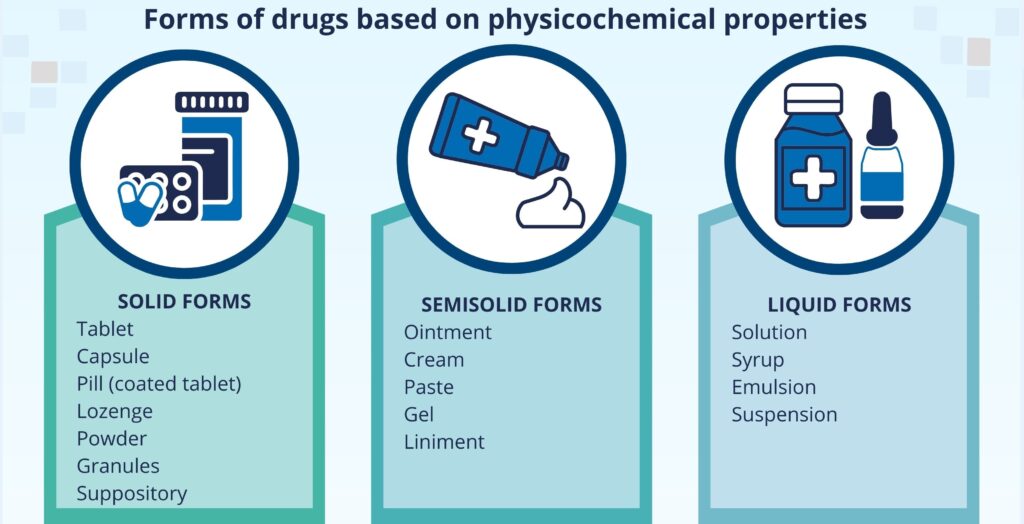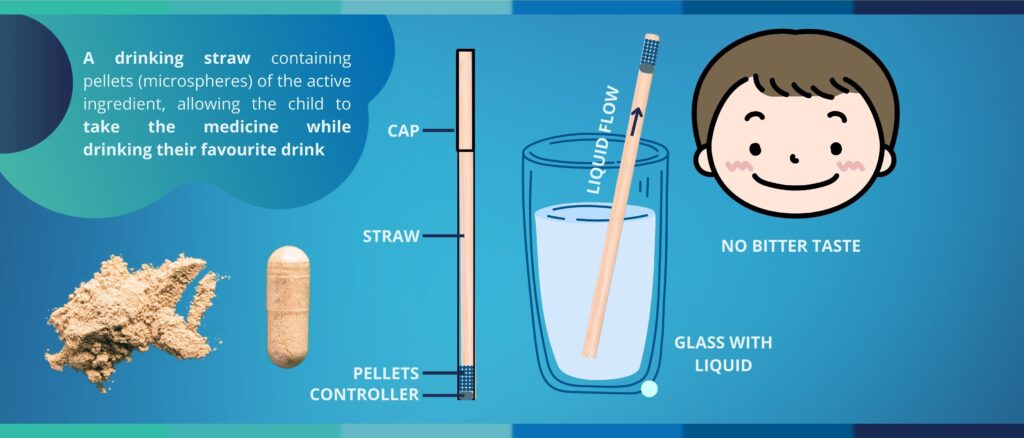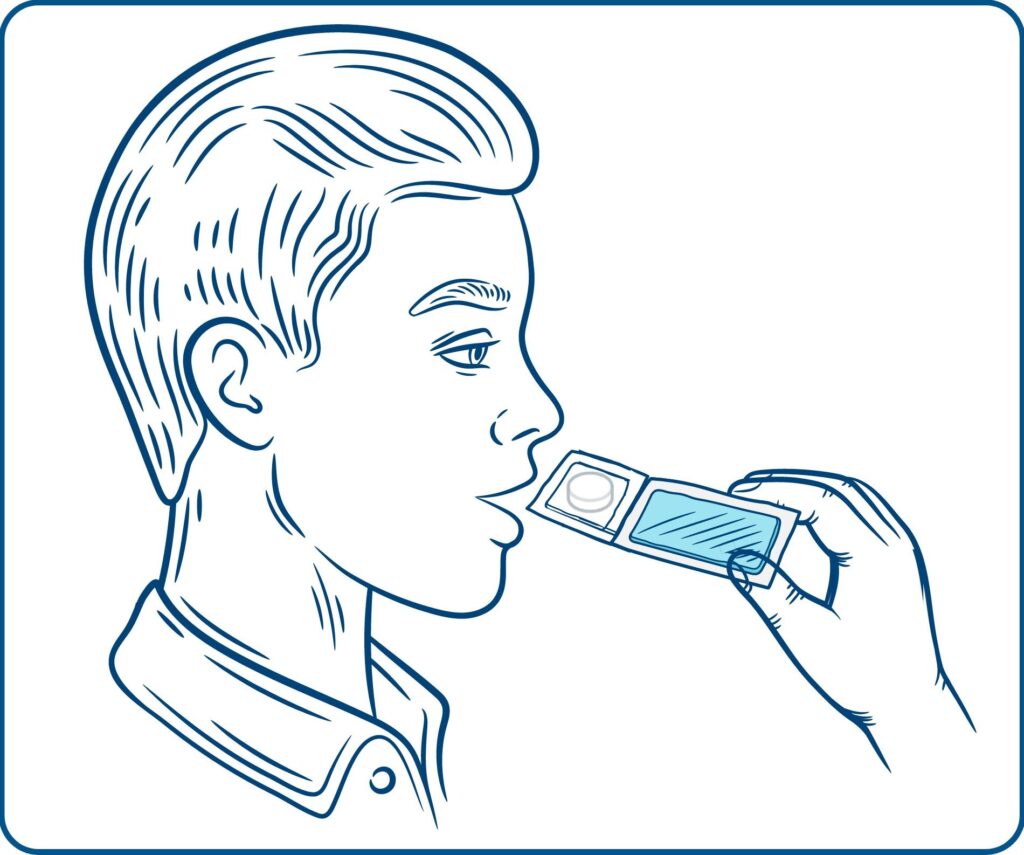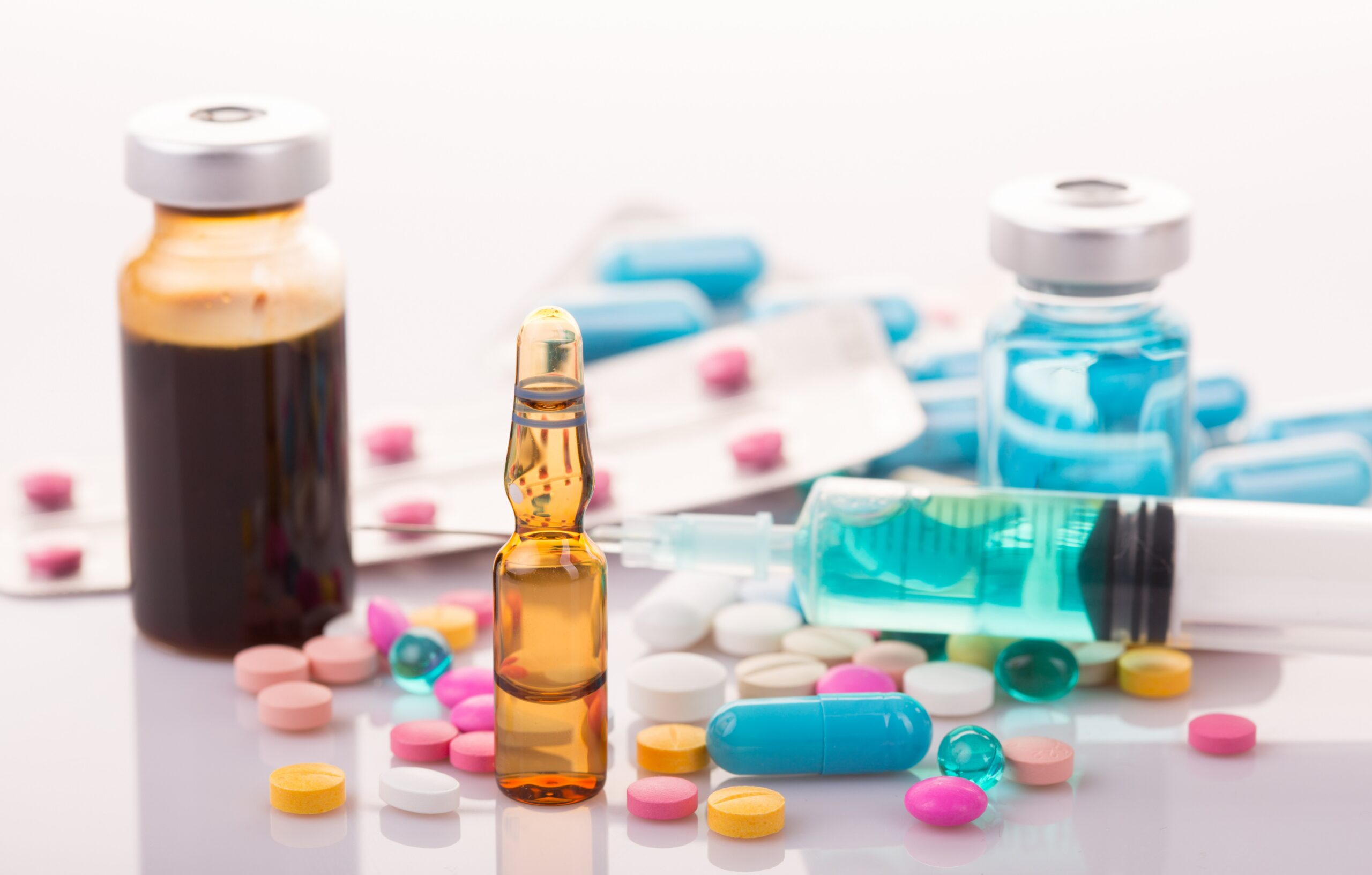World Pharmacist Day provides an excellent opportunity to explore the variety of pharmaceutical forms of medicinal products that play a key role in the daily lives of millions of patients around the world. Modern pharmacy is not limited to pills and syrups – it also encompasses modern technologies and innovative solutions that are transforming the landscape of treatment forms.
The choice of whether a drug is enclosed in a capsule or administered in liquid form is not arbitrary, but rather the result of specific patient needs, treatment efficacy, or the technological requirements of the active substance. In this article, we will discuss various drug forms – both traditional and those developed using the latest innovative technologies. We will also highlight their characteristics, benefits, and the challenges faced by drug developers and patients alike. Additionally, we will outline the role our company can play in the development and optimization of medications, showcasing how we can support you at every stage of this complex process.
Selected Traditional Pharmaceutical Dosage Forms
For centuries, pharmacists have developed medicines in various forms that we use and rely on daily:
Powders and tablets – the cornerstones of pharmacy
Powders were among the first forms of drug products used in ancient times. Though simple in form, they allowed for precise dosing and easy storage. Over time, powers evolved into more advanced forms, such as tablets, which are one of the most popular forms of drug administration worldwide.
Tablets dominate the market due to their ease of use, chemical stability, and modifiability. Patients can easily store and precisely dose them, making them an ideal choice for many therapies. However, despite their versatility, tablets do have drawbacks. Challendges such as difficulty swallowing, especially in children and the elderly, and potential interactions with food must be considered.
Capsules – protection and effectiveness
Introduced in the 19th century, capsules offer several advantages over tablets, such as better protection of active ingredients and greater flexibility in drug design. Their versatility allows them to contain various forms of medicine, such as powders, granules, or liquids, making them a popular choice in pharmacotherapy.
Like tablets, capsules can be coated to improve their resistance to external factors, facilitate swallowing, and give a more appealing appearance. Coating can also alter the drug’s properties, enabling the creation of capsules with delayed-release, such as enteric-coated capsules that release the active ingredient only in the intestines, protecting it from stomach acid and minimizing the risk of irritation.
Capsules come in hard and soft varieties. Hard capsules consist of two gelatin parts and are filled with powders or granules, while soft capsules have a flexible shell that can contain liquids. Special coatings on capsules can modify the drug release rate, which is particularly beneficial for substances sensitive to stomach acid. These features not only ensure effective drug dosing but can also enhance the bioavailability of the active ingredient by delivering it in a liquid form.

Syrups and suspensions – convenience for the youngest
Administering medication to children can be challenging. As a result, syrups and suspensions are often chosen as alternatives to solid forms. They are easier to swallow, and the option to add fruit flavors makes them more acceptable to young patients. However, it’s important that syrups are not too “appealing” to avoid encouraging excessive consumption, making palatability a real challenge for drug manufacturers. Additionally, syrups require precise dosage measurement, which is not always asey to achieve in home settings.
Ointments, creams, and gels – local therapy
These are external drug forms that are highly effective for treating skin conditions and localized pain. Their action is restricted to the application site, minimizing the risk of systemic side effects. Choosing the appropriate preparation for local treatment is essentioal to ensure therapy effectiveness and patient comfort.
Inhalers – effective help for asthmatics
Inhalers are irreplaceable in the treatment of respiratory diseases. They deliver the drug directly to the lungs, ensuring rapid action, minimizing the risk of side effects, and allowing precise dosing. However, the drawback of this form is that some patients find it difficult to use, which can reduce the effectiveness of the therapy.
Patches – convenience and discretion
Transdermal patches enable the gradual release of active ingredients through the skin into the bloodstream. They are used in therapies for pain, hormonal treatments, and nicotine replacement, and more. Patches are discreet and convenient, with the advantage of providing long-lasting effects without the need for frequent medication administration. However, they may cause skin irritation and are not suitable for all types of medications.
Suppositories, globules – an alternative to oral forms of medication
Suppositories are solid forms of medication designed for rectal administration, while globules are for vaginal administration. They dissolve at body temperature, releasing the active ingredient for direct absorption into the bloodstream or local action at the site of administration. Suppositories and globules are particularly useful when oral administration is not possible, such as in patients with vomiting or difficulty swallowing. However, their administration can be uncomfortable and may not be acceptable to some patients. Additionally, the absorption of the active ingredient from these drug forms can be variable, which affects the predictability of the therapeutic effect.
Extended-release drugs – fewer pills, more effectiveness
These drugs are designed to gradually release the active substance in the body over an extended period, reducing the frequency of dosing. They are convenient for patients, improve adherence to treatment regimens, and ensure stable drug concentrations in the blood. However, they can be more expensive and may be more difficult to discontinue if side effects occur.
Modern Drug Forms: Innovations for the 21st Century
The development of technology and research in pharmaceuticals allows for the creation of new pharmaceutical forms that are revolutionizing the treatment of many diseases. Innovative solutions enhance the precision and effectiveness of drug bioavailability, leading to better outcomes and increased safety for patients. New drug forms not only improve therapeutic efficacy but also elevate patient comfort, making treatment more tailored to individual needs.
However, the advancement of new drug forms comes with new challenges, as they often require different production, technological, and regulatory specifications compared to traditional pharmaceuticals. It is essential to develop new standards for stability, dosing, and safety to meet the growing expectations associated with their advanced properties.
Straws with medicine
Giving medicine to children can be challenging, as we often resist taking it. Children have a heightened sense of taste, which makes many medicines, especially bitter ones, unacceptable to them. The form of the drug, such as large tablets, can also be problematic, as children may be not able to swallow them and due to the risk of chocking. Studies show that even sweetened syrups, which are designed to mask unpleasant taste, may fail if their texture or smell is unappealing. Therefore, it is essential to develop more accessible forms of medication to make administration easier for young patients.
Recently, a new drug delivery method has been developed in the form of a drinking straw, that contains pellets (microspheres) with the active substance. This allows the child to take the medication while enjoying their favorite beverage. This solution certainly changes the way medication is administered, making it more patient-friendly and less stressful for the little ones [1].

Medicinal chewing gums
Although known since the 1920s, chewing gums gained popularity in the 1990s. This is when the term “chewing gum” was officially recognized by a European Council committee. This dosage form of the drug offers many advantages, including the ability to bypass the first-pass effect, allowing the active ingredient to work faster and more effectively. Chewing gums release the drug quickly in the mouth. Due to the drug’s rapid release in the mouth and convenient use, they are particularly beneficial for people who have difficulty swallowing tablets. Nowadays, substances such as nicotine, caffeine, dimenhydramine, which have systemic effects, are commonly used in the form of chewing gums. Nystatin and metronidazole, which have topical effect are also available in this form [2].
Orodispersible films
Polymeric oral dissolvable films (ODFs) provide a convenient application of medicinal substances. Thet are especially useful for children and the elderly. ADFs dissovle quicky in mouth, often is less than one minute. There is no need to sip water with them. The main ingredient in this form of drug is a gelling agent, usually gelatin or modified pea starch [3].
“Gel Together” Technology

Drug substances often interact with foods, beverages and even other drugs. These interactions may cause active substances to deactivate or reduce their bioavailability. Sometimes, these interaction may lead to the formation of undesirable compounds, which can cause side effects. For example, some drugs react with calcium in milk. This reaction forms compounds that are difficult to dissolve, hindering absorption in the gastrointestinal tract. Similarly, grapefruit consumption can increase in the concentration of certain drugs in the blood, which can cause toxic effects.
To prevent these issues, an innovative “Gel Together” technology has been developed. It uses two-chamber sachets to separate the drug (in tablet or granule form) from the carrier gel. By separating these components until just before administration, early adverse reactions are avoided. This helps maintain the stability and efficacy of the active substance. Once the membrane separating the two chambers is pierced, the components combine to form a gel formulation that can be safely taken orally.
This technology provides optimal conditions for the drug, but also facilitates ingestion, which can improve the therapy comfort. By eliminating the risk of interactions with foods and other substances, “Gel Together” enhances drug safety. It improves therapy effectiveness, which is particularly important in the treatment of conditions where precise dosing and control of the drug are crucial [4].
The Future of Pharmacy: What Lies Ahead?
Progress in the pharmaceutical field is not slowing down. In the coming years, we can expect to see even more innovations, such as personalized drugs tailored to a patient’s genotype, 3D printing of drugs, and the use of artificial intelligence in the process of creating new pharmaceutical forms [5,6,7].
Personalized medicine is an advanced form of therapy that is revolutionizing the approach to treatment by tailoring it to individual patient characteristics. Unlike traditional therapies, personalized medicines take into account a patient’s specific genetic characteristics, biomarkers, lifestyle and other individual aspects of health.
At SciencePharma we pace with the dynamic changes in the pharmaceutical industry, offering comprehensive support in the development and launch of medicinal products across all pharmaceutical forms. Our experts carefully analyze key factors, such as the potential for obtaining OTC status or demonstrating bioequivalence for generic products, based on the product’s pharmaceutical form. Partnering with us ensures professional guidance on optimal solutions, helping you successfully introduce new products to the market.
We have extensive experience working with various drug forms, inluding sterile dosage injection forms. We offer our support at every stage within the whole product lifecycle – from the development throug regulatory processes until PV services and importation & supply chain management.
[1] https://www.tandfonline.com/doi/full/10.1080/17425247.2023.2171013
[2] Nie tylko do żucia, Elżbieta Kamysz, Wojciech Kamysz, Przemysł Farmaceutyczny 5/2012 https://www.kierunekbmp.pl/Resources/art/5469/bmp_50cae4be74b21.pdf
[3] https://www.ptfarm.pl/wydawnictwa/czasopisma/farmacja-polska/103/-/16228
[5] https://www.mdpi.com/1999-4923/15/7/1916
[6] https://pubmed.ncbi.nlm.nih.gov/32748243/
[7] https://pharmaphorum.com/news/us-fda-approves-first-3d-printed-drug
[8] https://onlinelibrary.wiley.com/doi/full/10.1111/cge.12381


